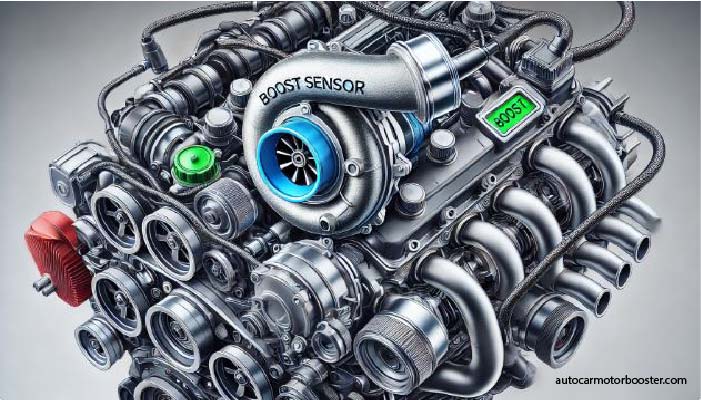Performance cars are engineered to deliver exceptional speed, power, and precision. A critical component in ensuring their efficiency and performance is the boost sensor. In this article, we will delve into the function, importance, and maintenance of boost sensors in performance cars, helping you understand why they are a vital part of modern automotive engineering.
What is a Boost Sensor?
A boost sensor is a device found in turbocharged or supercharged engines. Its primary function is to measure the pressure of air in the intake manifold created by the turbocharger or supercharger. This information is sent to the Engine Control Unit (ECU), which uses it to adjust fuel injection and ignition timing for optimal performance.
Why Are Boost Sensors Crucial in Performance Cars?
The boost sensor plays an indispensable role in ensuring performance cars achieve maximum efficiency and power. Here’s why they matter:
- Optimized Air-Fuel Mixture
- Boost sensors help maintain the correct air-to-fuel ratio for efficient combustion, ensuring better performance.
- Preventing Over-Boosting
- They monitor the turbocharger’s pressure levels, preventing damage caused by excessive boost.
- Enhanced Fuel Efficiency
- By ensuring optimal combustion, the boost sensor helps reduce fuel consumption without compromising power.
- Real-Time Engine Management
- Boost sensors provide critical data to the ECU, allowing real-time adjustments during high-performance driving.
How Does a Boost Sensor Work?
Boost sensors operate through a simple yet sophisticated process:
- Pressure Detection
- The sensor detects the pressure in the intake manifold created by the forced air from the turbocharger or supercharger.
- Signal Conversion
- It converts the pressure readings into an electrical signal that is sent to the ECU.
- Engine Optimization
- The ECU uses this data to adjust the fuel injection, ignition timing, and boost levels.
- Continuous Feedback Loop
- This process happens continuously, ensuring the engine is always operating at peak efficiency.
Benefits of Boost Sensors
Boost sensors offer several advantages that are critical for the performance and longevity of high-powered vehicles:
- Improved Engine Performance
- They ensure the engine delivers optimal power by regulating boost pressure.
- Increased Reliability
- Prevents engine damage caused by over-boosting or inefficient air-fuel mixtures.
- Eco-Friendly Operation
- By optimizing combustion, they help reduce emissions.
- Seamless Performance Adjustments
- Boost sensors allow the ECU to adapt to changing driving conditions, whether you’re cruising or pushing the car to its limits.
Common Boost Sensor Problems and Fixes
- Inaccurate Pressure Readings
- Cause: Dirt or debris in the sensor.
- Fix: Clean the sensor regularly to prevent blockages.
- Sensor Failure
- Cause: Wear and tear due to prolonged use.
- Fix: Replace the sensor as part of routine maintenance.
- Wiring Issues
- Cause: Damaged or loose connections.
- Fix: Inspect and repair or replace the wiring.
- ECU Miscommunication
- Cause: Faulty software or hardware.
- Fix: Update the ECU software or check for hardware issues.
Maintaining Your Boost Sensor
To ensure the longevity and efficiency of your boost sensor:
- Schedule regular inspections during vehicle maintenance.
- Keep the sensor and its surrounding components clean.
- Replace faulty sensors immediately.
- Use high-quality fuel to minimize contaminants in the system.
FAQs about Boost Sensors
Q1: What happens if a boost sensor fails?
A1: A failing boost sensor can cause inaccurate pressure readings, leading to poor engine performance, reduced fuel efficiency, and even engine damage.
Q2: Can I drive without a boost sensor?
A2: While technically possible, it is not advisable. Without a boost sensor, the ECU cannot properly regulate boost pressure, which may result in inefficient operation and potential damage.
Q3: How do I know if my boost sensor is faulty?
A3: Symptoms of a faulty boost sensor include reduced power, increased fuel consumption, and a check engine light on your dashboard.
Q4: How often should I replace a boost sensor?
A4: There is no fixed schedule, but it’s recommended to inspect the boost sensor during regular maintenance and replace it if it shows signs of wear or damage.
Q5: Are boost sensors used in naturally aspirated engines?
A5: No, boost sensors are specifically designed for turbocharged or supercharged engines, as naturally aspirated engines do not generate the same type of boost pressure.
Conclusion
The boost sensor is an integral part of modern performance cars. It ensures optimal engine performance by providing precise data to the ECU, which adjusts various parameters to maintain efficiency and power. Regular maintenance of your boost sensor will not only extend its lifespan but also protect your engine from potential damage.
For car enthusiasts, understanding the role of boost sensors can help you make informed decisions about maintaining and upgrading your vehicle for maximum performance.
If Like This Article Visit Our Website. Collect From Wekiapedia
